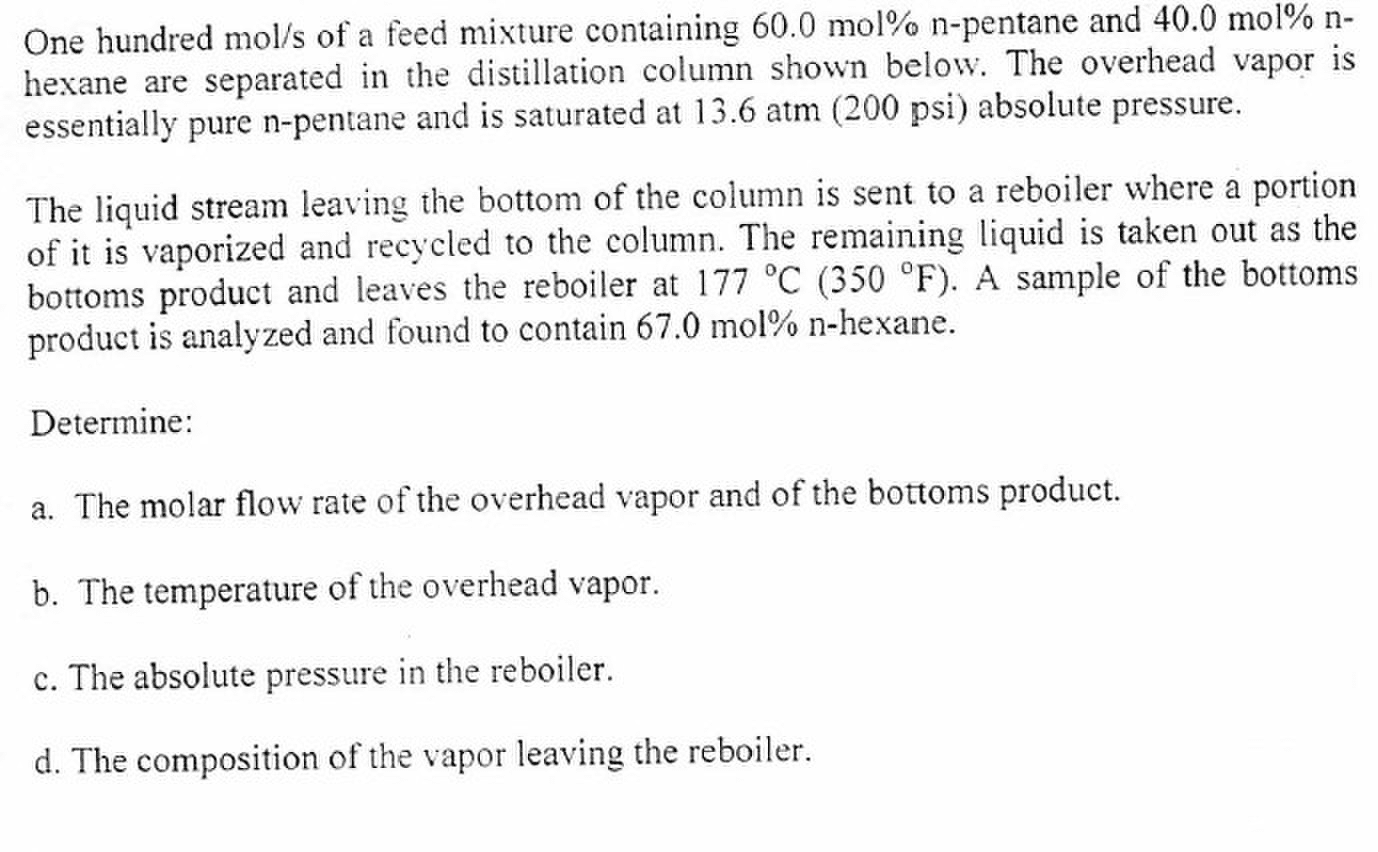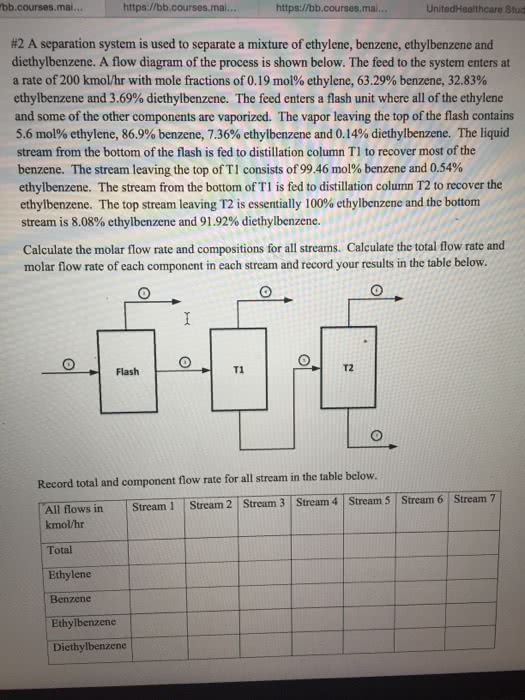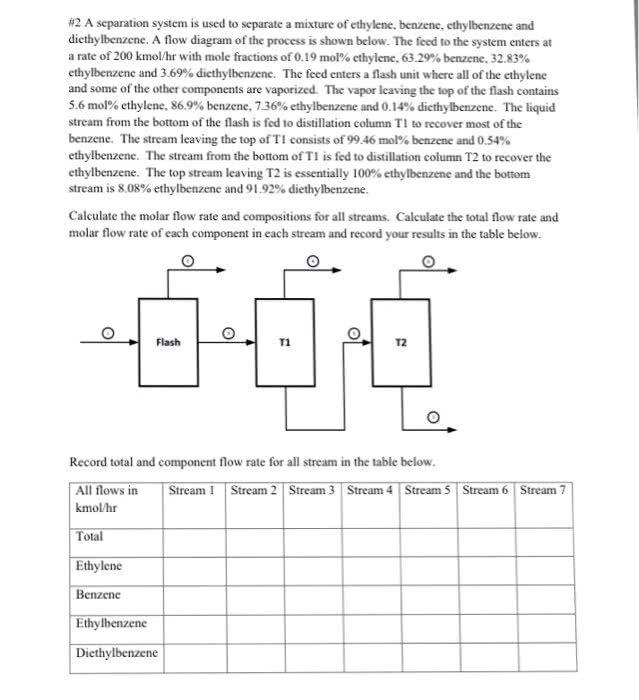A liquid mixture of 50% benzene (B), 45% toluene (T) and 5% non-volatile (S) is separated into two product streams by distillation. The process is continuous, non-reactive and steady state.
Inside the column a liquid stream flows downward and a vapor stream rises. The vapor leaving the top of the column contains 95 mole% benzene and balanced toluene. The vapor does not contain the non-volatile component (S). The vapor is completely condensed and split into two fractions: 60% is taken off as the overhead product stream, and 40% (the reflux) is recycled to the top of the column. The overhead product stream contains 90% of the benzene fed to the column.
The liquid leaving the bottom of the column, containing all three components, is fed into a partial reboiler in which 45% of it is vaporized. The vapor generated in the reboiler (the boilup) is recycled to become the rising vapor stream in the column, and the residual reboiler liquid is taken off as the bottom product stream. The recycled vapor (boilup) contain only benzene and toluene. The composition of the streams leaving the reboiler are governed by the relation:
(yB/(1-yB)) / (xB/(1-xB)) = 2.25
Where yB and xB are the mole fraction of benzene in the boilup vapor and liquid streams leaving the reboiler, respectively.
Choose a basis of 100 mole/h overhead product. Draw and completely label the flow chart with known and unknown information. Minimize the number of unknowns on the flowchart by using the information and relations provided.
Do degrees of freedom analysis for all individual units and the overall system. Identify a system with which the process analysis might appropriately begin.
A liquid mixture of 50% benzene (B), 45% toluene (T) and 5% non-volatile (S) is separated into two product streams by distillation. The process is continuous, non-reactive and steady state.
Inside the column a liquid stream flows downward and a vapor stream rises. The vapor leaving the top of the column contains 95 mole% benzene and balanced toluene. The vapor does not contain the non-volatile component (S). The vapor is completely condensed and split into two fractions: 60% is taken off as the overhead product stream, and 40% (the reflux) is recycled to the top of the column. The overhead product stream contains 90% of the benzene fed to the column.
The liquid leaving the bottom of the column, containing all three components, is fed into a partial reboiler in which 45% of it is vaporized. The vapor generated in the reboiler (the boilup) is recycled to become the rising vapor stream in the column, and the residual reboiler liquid is taken off as the bottom product stream. The recycled vapor (boilup) contain only benzene and toluene. The composition of the streams leaving the reboiler are governed by the relation:
(yB/(1-yB)) / (xB/(1-xB)) = 2.25
Where yB and xB are the mole fraction of benzene in the boilup vapor and liquid streams leaving the reboiler, respectively.
Choose a basis of 100 mole/h overhead product. Draw and completely label the flow chart with known and unknown information. Minimize the number of unknowns on the flowchart by using the information and relations provided.
Do degrees of freedom analysis for all individual units and the overall system. Identify a system with which the process analysis might appropriately begin.



